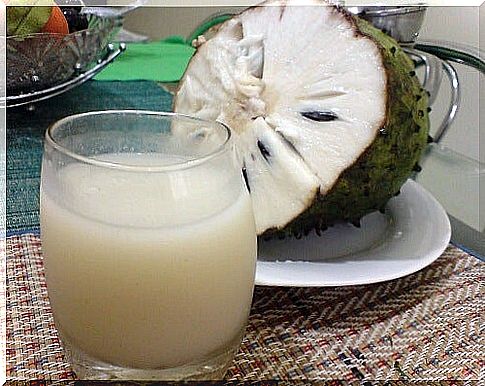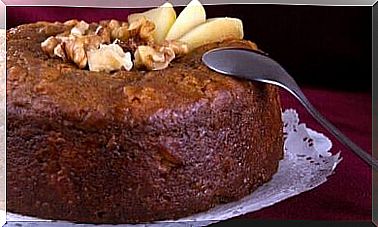What Is Graviola Used For?

Graviola, or guanabana, is a plant native to Mexico, the Caribbean and Central and South America: it is perennial and endemic.
Graviola has many properties, both nutritional and medicinal. In this article you can discover the uses and benefits of this plant.
Characteristics of Graviola
Graviola or guanabana is made up mostly of water and its pulp offers numerous nutrients, including high doses of vitamin C, which help keep antioxidant levels in the body in balance.
It also has proteins, mineral salts, potassium, calcium, phosphorus, iron and lipids.
We remember, however, its high caloric value due to the carbon hydrates present in it; for this reason, excessive intake is not recommended if you do not want to gain weight.

However, the pulp of Graviola can be consumed in the form of juice or diluted in water to enjoy its benefits as a diuretic.
It is a powerful regulator of the functions of the body, it helps to fight hypertension and diseases of the respiratory tract (especially colds).
It also cleanses and keeps the liver healthy and regulates blood sugar levels (ideal for people with diabetes).
Patients suffering from mumps and nervousness or insomnia can also consume Graviola leaves.
It is possible to prepare a delicious infusion by combining the leaves and flowers (a handful) of the plant; sweeten it with honey.
Thanks to this drink, you can treat flu or different types of convalescence following an illness or an operation.
Graviola has few side effects, but excessive consumption is not recommended for pregnant women.
It is possible to enjoy the plant in its entirety, i.e. leaves, fruits, flowers, roots and bark, as all these parts possess medicinal properties.
However, the part that exhibits the most properties are the leaves. In America it is very popular, in the form of tea or smoothie.
The pulp, in fact, is used in the preparation of smoothies, juices, ice creams and desserts. Its taste is sweet and delicious.
Graviola is also known by many other names: catuche, catoche, corossol, masasamba, chachiman, guanabana, huana huana, brazilian pawpaw, zapote, araticum, annonae pehne.
Each of these terms is used according to the ancestral language or the area in which it is grown.
However, the scientific name of this plant is Annona Muricata and it is a fruiting plant.
Medicinal uses of Graviola
The pulverized seeds serve as insect repellent to be applied to the skin ; even the water of the leaves is ideal for eliminating lice and their eggs; you have to apply it on the scalp.
You can prepare a smoothie with three Graviola leaves and a cup of water, to drink on an empty stomach for a week in a row, in order to reduce the side effects of chemotherapy or some very powerful drug.
Graviola fruit, if eaten unripe (green) is indicated for jaundice, a disease that affects the color of the skin, making it yellowish.
You just have to cut it into three parts, remove the seeds and blend it. Strain it before taking it and then add some honey to disguise the bitter taste.
Full List of Medicinal Properties of Graviola:
- An infusion with Graviola leaves is ideal for containing internal bleeding.
- Combats high blood pressure.
- Helps treat asthma, a disorder caused by obstruction of the airways.
- It prevents the production of cancer cells.
- Reduces the increase in sugar, or glucose, in the blood; therefore, it counteracts diabetes.
- It fights liver disorders in general.
- It has the ability to reduce possible tissue alterations that produce an increase in volume.
- It is an excellent insecticide, in fact it helps to eliminate insects, including mosquitoes.
- It is a wonderful amoebicide, which means it fights parasites, such as intestinal worms.
- It is an expectorant product, which helps treat any type of disease related to the respiratory system, including bronchitis or asthma.
- It is a natural vasodilator, thanks to its leaves that prevent or correct poor circulation and clots.
- Graviola leaves have a great sedative power; ideal for calming nerves and stress and, consequently, for better sleep.
- It has an antimalarial action, as it hinders the symptoms of this disease, characterized by fever, headache and muscle aches.
- Promotes milk secretion, ideal for breastfeeding women whose milk production is insufficient.
- It is an antispasmodic, which helps prevent or treat involuntary muscle contractions.
- It fights ulcers, facilitating wound healing and is excellent for gastritis.
- It is antidiarrheal, both in the case of infections and eating disorders.
Side effects of Graviola
Since it has an antimicrobial action, if consumed in high doses, it can alter the intestinal flora and cause constipation or diarrhea.
This fruit should be taken in moderation, starting with a minimum dose to be increased every day or every week.
In turn, due to its vasodilating, hypotensive and cardiodepressive actions, it is not suitable for people suffering from heart or blood problems.
It is not even suitable for pregnant women, although after childbirth it is, to increase milk production.
Graviola and cancer
It is necessary to dedicate a paragraph on the relationship between Graviola and cancer. It is, in fact, a powerful anti-carcinogen, proven by numerous researches.
All parts of the plant (bark, fruits, leaves and roots) act on the body cells, destroying the diseased ones and, moreover, it is an excellent natural remedy to reduce the effects of chemotherapy, especially with regard to vomiting, nausea and dizziness.
Graviola works against breast, ovarian, colon, blood, liver, thyroid, pancreas, prostate, kidney and lung cancer.









